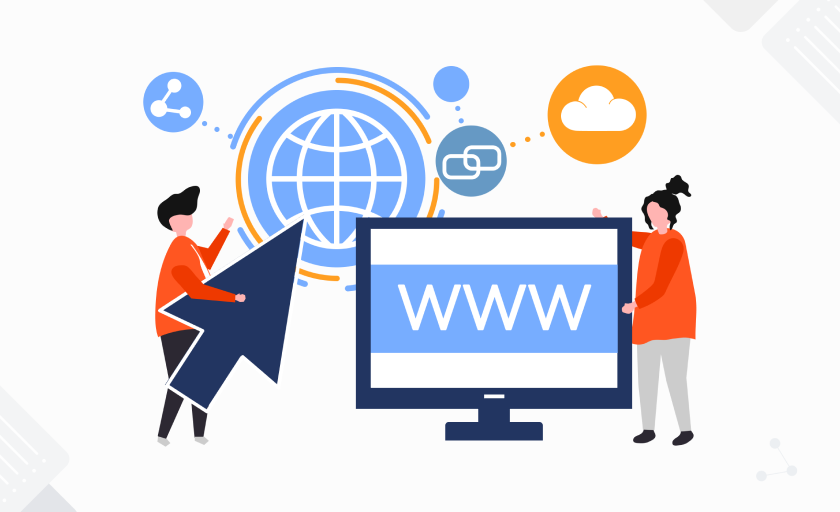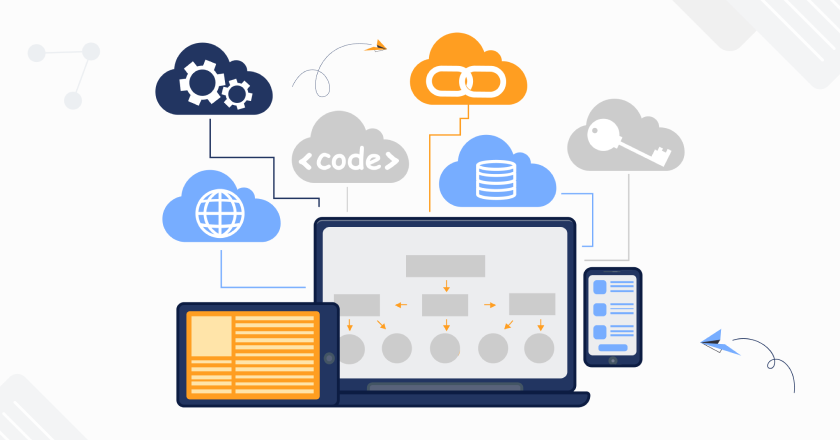How to Modernize Legacy Systems: Steps and Approaches
This guide walks you through the technical approaches available to legacy system modernization, as well as steps your business can take to modernize.

Every business knows the struggle to stay current. In manufacturing, outdated facilities affect what products a company can make, how efficiently it can make them, how easily its employees can innovate, and, as things like the roof and insulation age, how much it's spending on maintenance.
Digital systems mature even faster. The world now generates more than2.5 quintillion bytes of data every day, driving a sea change in database technology, security, and infrastructure. As cloud services boom, software is evolving to take advantage of their capabilities, becoming more lightweight and agile. And businesses need that agility. If you can't respond to changes quickly, you can't compete today.
This guide to legacy system modernization walks you through the steps to modernize legacy software, basic legacy system modernization approaches, and the payoff each can bring.
What are legacy systems?
Any software that was designed for a reality that has significantly changed is a legacy system. Advancements in hardware, new security requirements, a merger, a shift in consumer demand, or a fast-approaching end to support could render a system outdated.
Whatever has changed, a tool that once helped your business grow is starting to hold it back instead. Hallmarks of a legacy system include dwindling compatibility, increased maintenance costs, multiplying security vulnerabilities, and mounting technical debt, i.e., "band-aid solutions" provided by developers because they didn't have the time or resources to implement better ones.
And, of course, the number one symptom of a legacy system is that it no longer does everything your business needs it to do. Older software tends to have monolithic architecture, where even a small tweak to one function may impact the whole application. Adapting to a dynamic marketplace with such a system is challenging, if not impossible.
What is legacy system modernization, and why is it necessary?
If a legacy system responds to the past, a modern one responds to the present. That means both meeting new needs and taking advantage of opportunities afforded by evolving technology.
Many companies underestimate both the benefits of legacy application modernization and the costs of putting it off. About nine in ten IT decision-makers surveyed by Avanade stated that modernization is critical to meeting emerging business requirements, but nearly as many reported that executives at their organization undervalue the ROI it can bring.

Technical debt has a dollar figure
All software accrues technical over its lifetime, and it's not always a bad thing. But too much technical debt costs your business agility, because messy code slows developers down when it's time to add functionality or implement a new standard.
Technical debt also drains your IT budget. Hours your development team spends on delayed refactoring or other corrections are hours they can't spend getting new features into production. Depending on the extent and nature of your system's backlog, it could eventually even translate into legal fees. Senior IT officers and developers project that modernization would reduce overall operating costs at their company by more than13% on average.
Technical debt has a dollar figure
The concept of legacy application modernization isn't synonymous with a move to the cloud, but cloud computing is often central. In 2021, enterprise spending on cloud services grew 37%, to $178 billion. Most of that increase reflects surging demand for platform-as-a-service (PaaS), a service model where a third party provides a development team with the hardware and computing resources to develop and host applications.
The other two main cloud service models are infrastructure-as-a-service (IaaS), which provides raw computing resources like storage and servers, and software-as-a-service (SaaS), which provides access to cloud-hosted software. In all these models, services are on-demand and the provider handles maintenance. Contrast that with a data center your company has to build, house, and maintain. The cloud offers highly scalable computing with much lower overhead.
That scalability is a prerequisite for DevOps, an approach in which developers and IT operations personnel team up to get ideas into production faster, more reliably, and more securely. More and more businesses are adopting DevOps in order to be more responsive to their customers.
Architecture has changed
Which legacy modernization approach you choose will depend on a lot of factors, but the odds are good that at some point, you'll want to update the application architecture.
Since the rise of cloud technology, service-oriented andmicroservices architectures have grown continuously more prominent. In these architectures, software services or functions are self-contained but can interact with each other via application programming interfaces (APIs). APIs are what make it possible to integrate one app into another, and integration is essential to automation and efficient data-sharing.
Security demands are evolving
Cybersecurity has two basic concerns: keeping data private, and keeping data intact. Security problems in legacy systems can include old code with known vulnerabilities, software rot, or physical degradation of on-site data storage.
But the latest technologies carry risks of their own, and when considering how to modernize legacy systems, security should be a cornerstone of any strategy. The tenancy model that makes public cloud services so scalable also works against traditional perimeter security measures. Experts are devoting more and more attention to these new challenges, with the worldwide cloud database security market expected to double to more than $15 billion by the end of 2026.
The business steps of legacy system modernization
Amid all the compelling reasons to modernize, it's important not to lose sight of the fact that legacy systems are still in use because they're still important. The value of new technologies lies in what they can do for people. Stay focused on your business objectives by breaking legacy system modernization steps into a three-phase cycle.
Understand your business scope
Successful projects are guided by a why. Start by choosing a reputable guide to modernizing legacy systems who can help your business to:
- define the problems
- set modernization goals
- fix a budget and timeline
Analyze your legacy system
Once you've established why you're modernizing, it's time to make concrete decisions about how to modernize legacy apps. Your vendor can assist you to:
- assess strengths and weaknesses
- prioritize new features
- calculate ROI for different strategies
- choose a technical approach
Ensure continuous modernization
Your project is underway, your dev team is bringing your new system online: congratulations! But optimizing your business processes is never a one-and-done affair, and modernization is no exception. Now it's time to:
- monitor performance
- respond to feedback
- plan for changes, growth, and opportunities
Technical approaches to legacy software modernization
The question of how to modernize legacy software has as many answers as there are systems, but general approaches can be grouped by how complicated they are to implement.
Replace
SaaS software similar to the legacy system might be available commercially. SaaS solutions can be used as-is or customized to some degree. Unfortunately, off-the-shelf replacements may not adequately support proprietary business processes. Downsides of this approach include problems with data migration, lack of flexibility, and the expense and disruption of retraining staff on the new product.
Rehost
Rehosting migrates apps as-is from an existing platform to a modern one—usually, from an on-site data center to a public or hybrid cloud. It's fast and straightforward, but not all legacy systems are well suited to this unmodified "lift and shift" approach. Other adjustments may be necessary in order to preserve functionality and crucial data.
Re-platform
In re-platforming, developers optimize apps for the new platform as part of the move. This "lift, tinker, and shift" strategy provides a middle ground between rehosting and more extensive transformations.
Re-architect
When an application's original architecture is fundamentally incompatible with modern infrastructure and platforms, developers can renovate the design at foundation-level. Usually this means adapting an app with monolithic architecture into one with service-oriented or microservices architecture, including updating APIs.
Descriptive analytics
Using Google to track a website's traffic, such as page views and number of visitors is an example of descriptive analytics. It's helpful information to know and this data can be used for pattern discovery methods like customer segmentation, i.e., culling through a customer database to understand a customer's preferred room type. Cluster segmentation models can split customers into their preferred choice of purchases.
Rebuild
What it sounds like: developers rewrite the app using modern architecture, frameworks, and languages to preserve or improve beloved functionalities, jettison obsolete ones, and add new features. Rebuilding and re-architecting are the most expensive and time-consuming paths to modernization, but they offer the greatest payoffs—one of which is making future modernizations much easier.
Since modernization is an ongoing commitment to your business's performance, any single approach might be one of many steps to modernize legacy systems.
Modernization payoffs
Different solutions will yield different outcomes, but there are clear trends in computing today that provide businesses distinct payoffs.
Respond to change
Modern software architecture, practices, and infrastructure are all geared toward agility, because that is the uppermost demand from markets and consumers. COVID-19 has been a global case study in the importance of responding to the unforeseen quickly. Modernizing business-critical systems lets you deliver results to your customers faster, increasing revenue by14% or more.
Raise productivity
In addition to faster runtimes and better performance, modernized systems allow companies to take advantage of software integrations and automations that streamline workflow. Seamless data-sharing also saves time and unlocks new insights.
Reduce costs
Shifting to the cloud lowers overhead, and discharging excess technical debt staunches a drain on your IT budget. Complying with current regulations and standards lowers the risk of fines and legal fees.
Retain consumers' confidence
Consumers today expect a digital-first experience in nearly every industry, but a data breach can permanently damage the public's faith even in market leaders. Bringing vulnerable legacy systems current is essential to providing innovative digital experiences securely and to safeguarding the data customers trust your company with.
Our experience
As your business faces the question of how to modernize legacy applications, having experience on your side is paramount. At Integrio, we offer comprehensive modernization services for legacy systems of any scale, complexity, or purpose.
Successful modernization lets your company take advantage of cutting-edge technologies in a way it never has before. Integrio Systems is recognized as an industry-leader in AI and machine learning, helping clients unlock the full value of their data. Other expertise includes Docker, Kubernetes, .NET and Azure SQL . With a portfolio of over 200 projects spanning every major industry, our developers have the knowledge and skill to transform your legacy code into standard-setting solutions.
Feature-rich rebuild for 123SignupFinal thoughts
Legacy systems modernization is both an inevitability and an opportunity. It's the key to the scaling, cost control, and features you need from your software to remain competitive. Although the challenges of modernizing are significant, the right development partner will help you navigate the risks of the process and maximize your return on investment.
Ready to get more out of your software? Get in touch, and let's start building your company's future.

FAQ
Legacy modernization is the process of transforming outdated software a business still depends on into a system that performs to modern standards on modern platforms.
Steps to modernize legacy software vary by project, and solutions range from replacement with an existing SaaS product to rebuilding apps from scratch. Compared to traditional monolithic software, modern apps are lightweight, with web development and cloud services at the center of today’s software ecosystem.
123Signup has been providing leading event and membership management software since 1999. In 2015, they partnered with Integrio to modernize their products. We audited the legacy code, rebuilt or refactored existing components, and created new UI, user-friendly features, modern APIs and integrations.
Contact us

